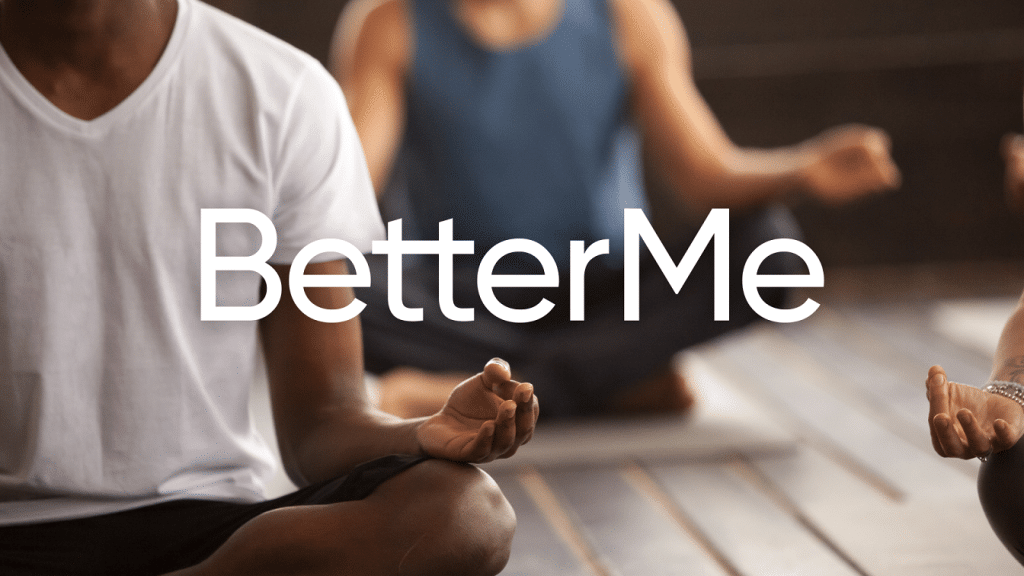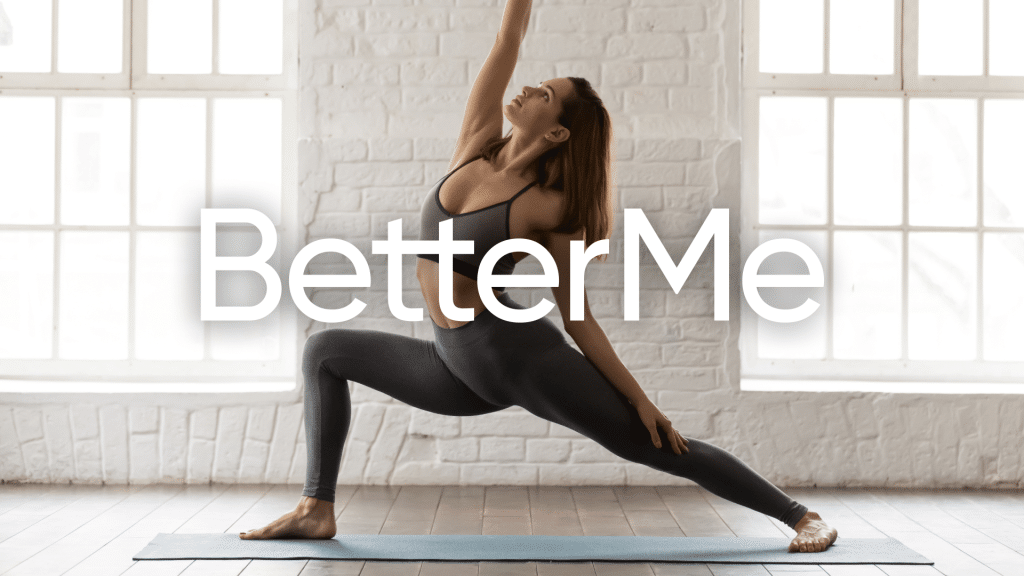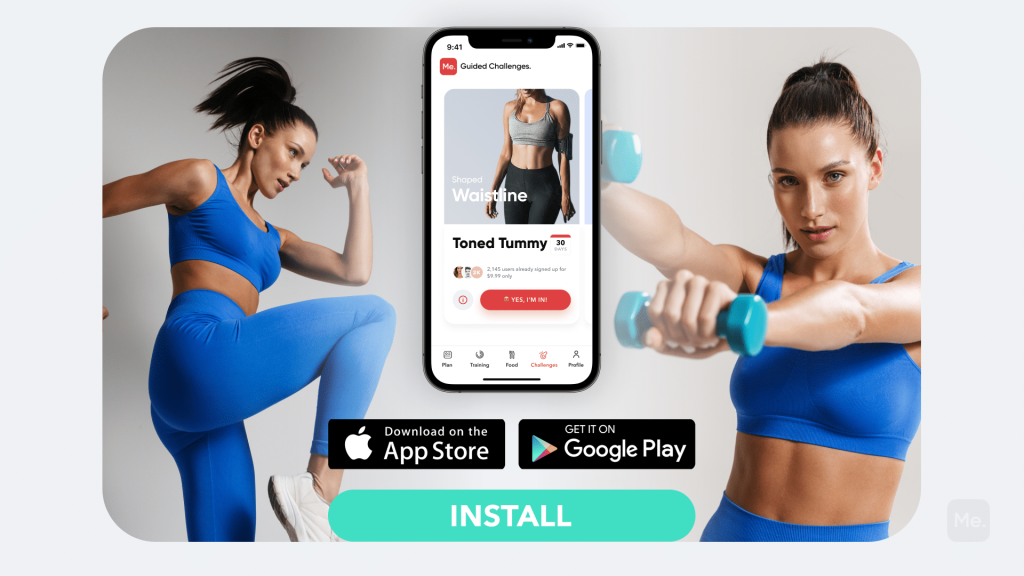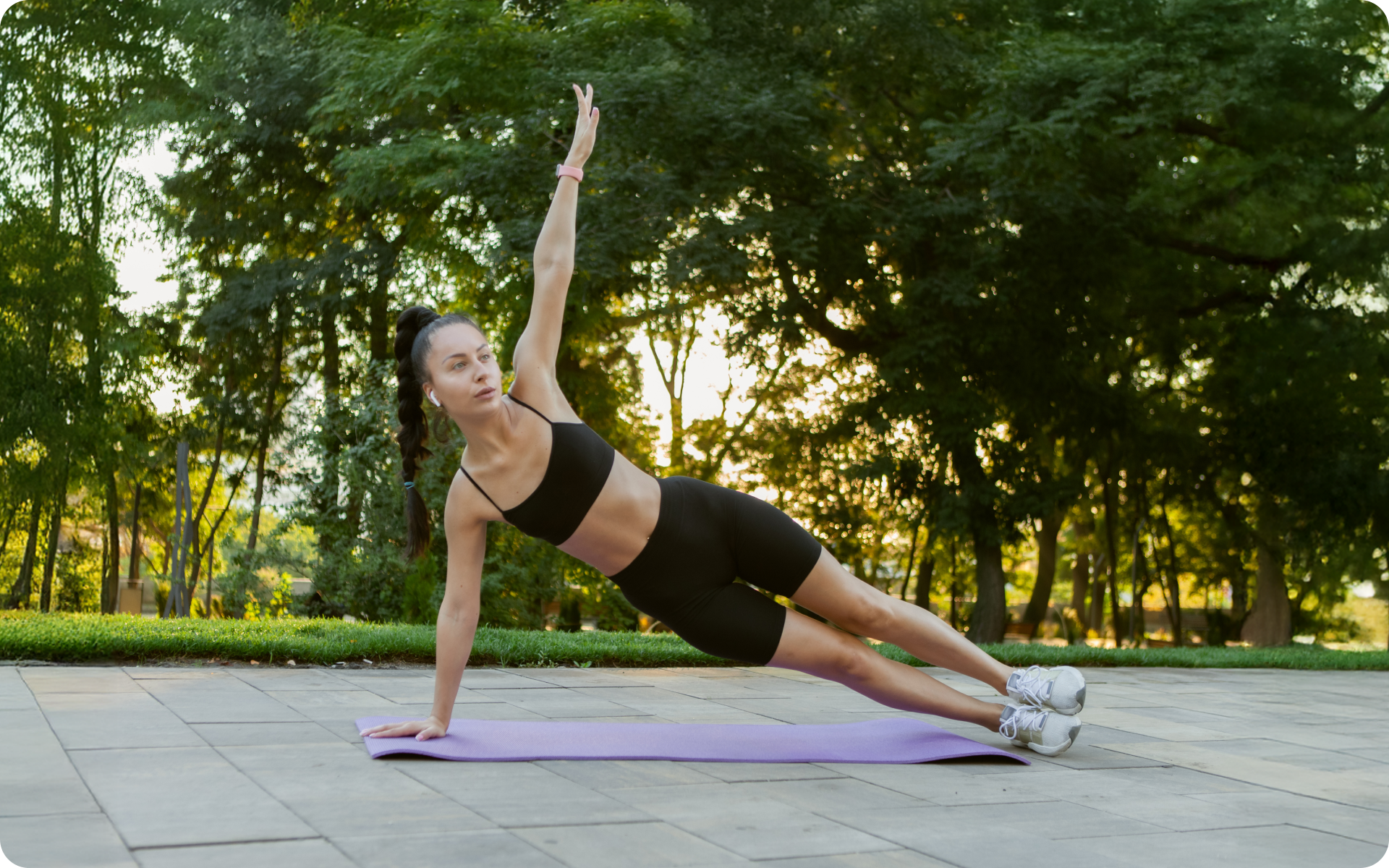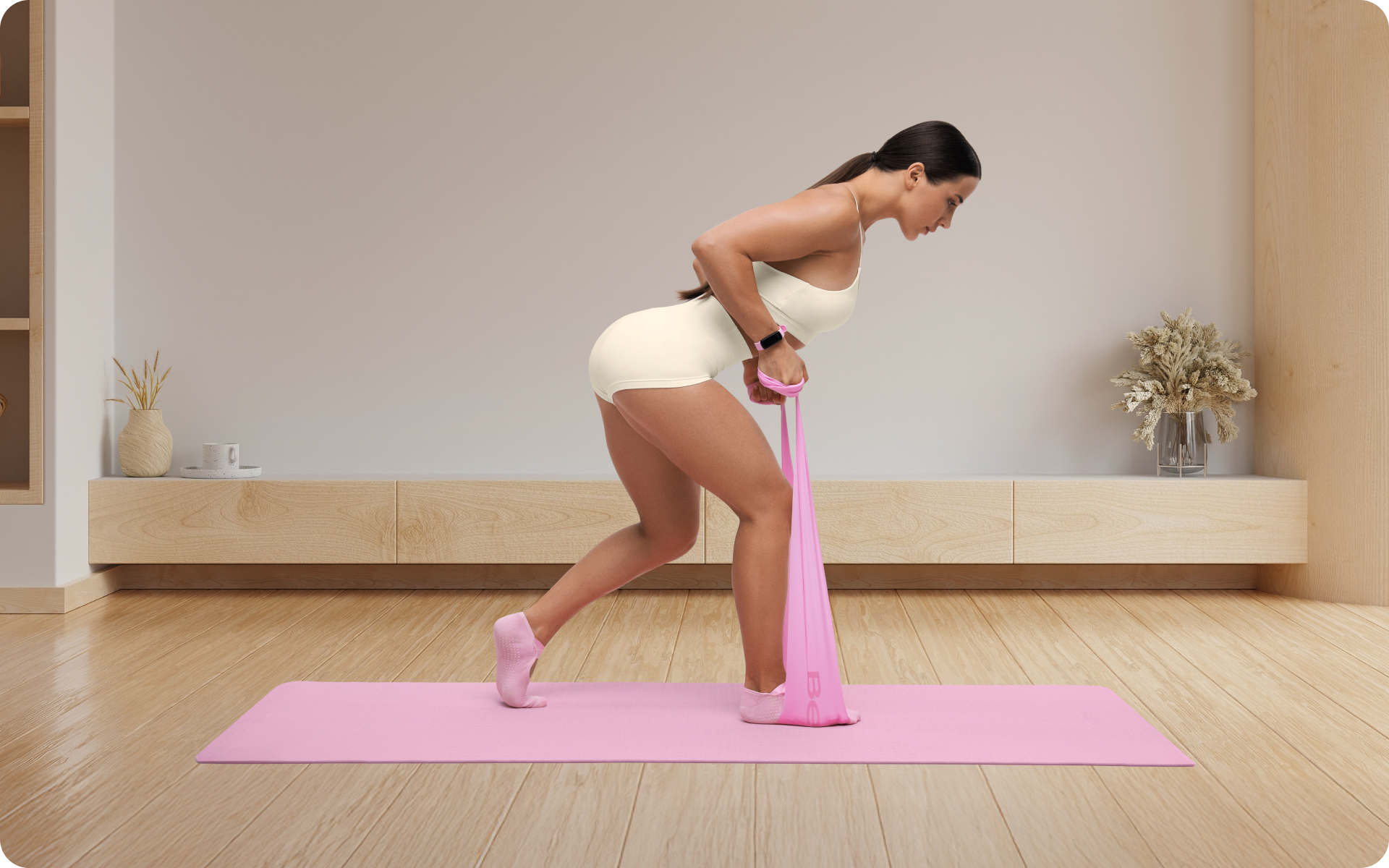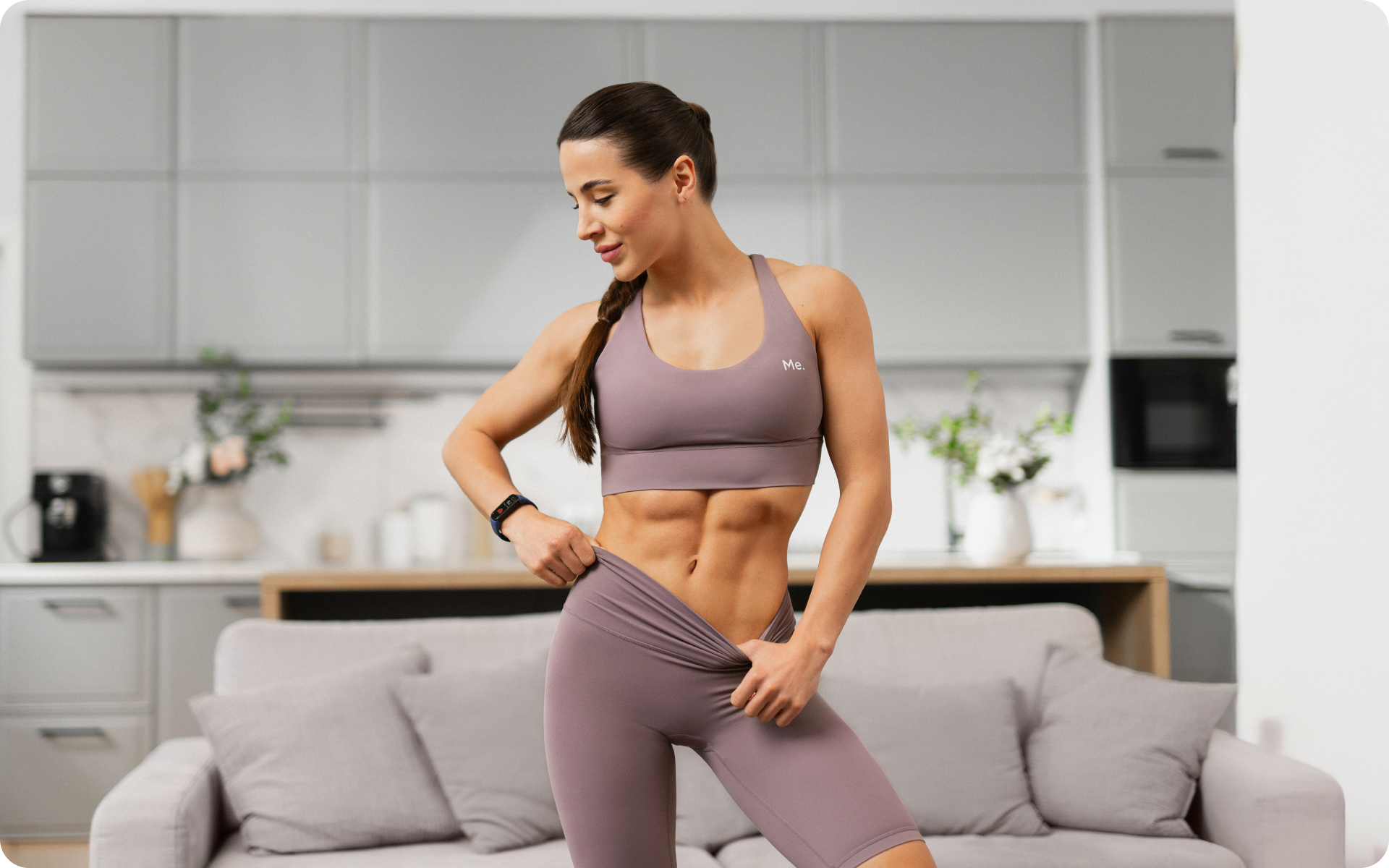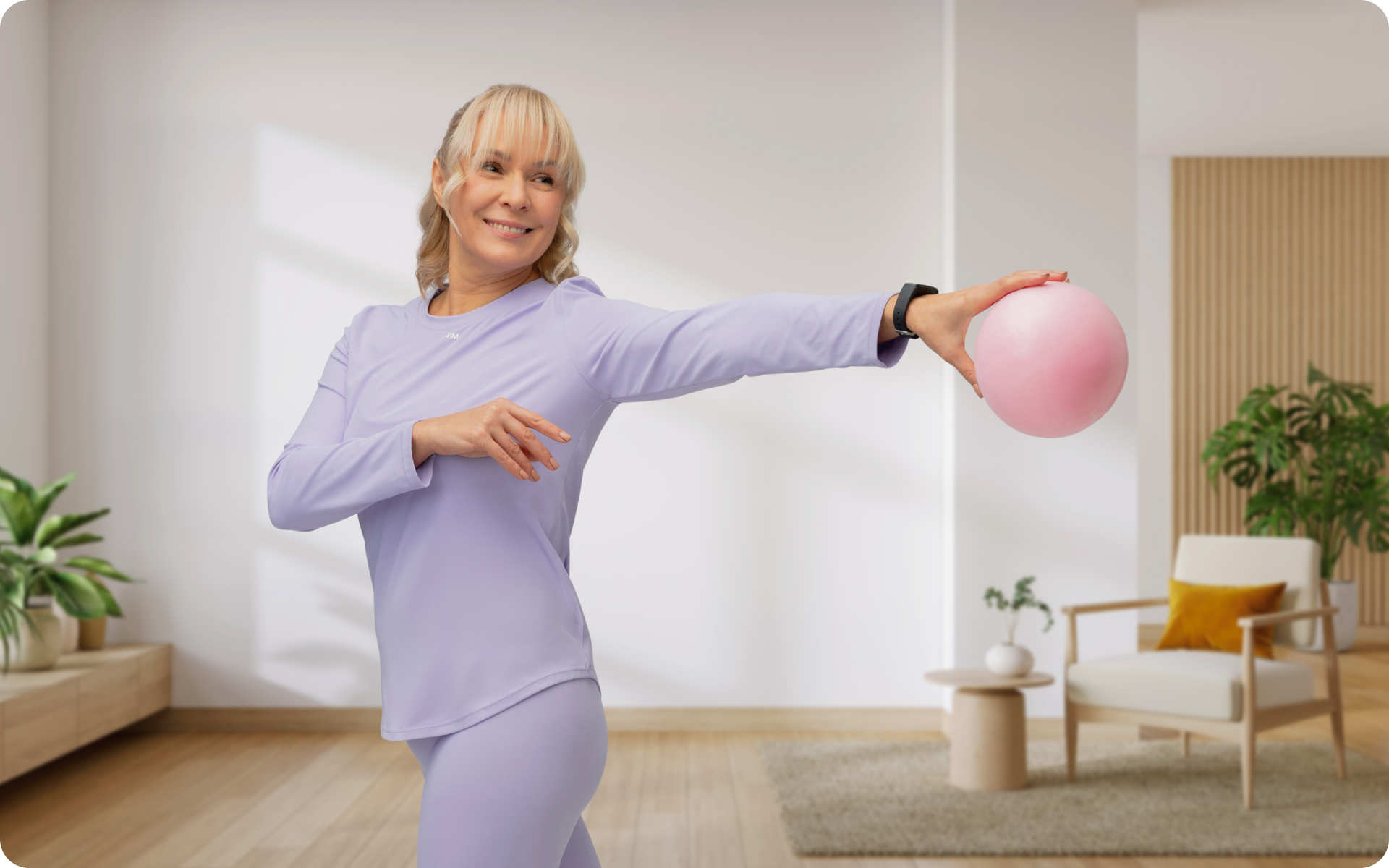If you exercise frequently you’re always looking for ways to improve your performance and get the most out of your workouts. Tweaking your rest periods, trying out new techniques, and changing up your exercises are all great ways to do this. That said, have you ever considered working out barefoot?
Get your personalized
meal plan!
Barefoot training has become increasingly popular in recent years, as more and more people are beginning to realize the benefits it can offer.
From improving balance and stability to increasing range of motion and developing proprioception, there are many reasons to give barefoot training a try.
But before you kick off your shoes and head to the gym, it’s important to understand how to do it properly. Keep reading to learn everything you need to know about working out barefoot, including the benefits, risks, and best exercises to try.
Should You Work Out Barefoot?
Whether or not you should work out barefoot depends on the workout you’re doing and your history of injuries. If you have any concerns it’s always best to speak with a doctor or certified trainer before starting a barefoot workout routine.
In general, though, it may be a good idea to workout barefoot if:
You’re Doing A Low Impact Workout
Low-impact workouts like yoga, pilates, or stretching are ideal for doing barefoot. These exercises tend to be easy on the joints and don’t require a lot of high-impact movements, so you’re less likely to injure yourself.
Strength training may also be considered low-impact, as long as you’re using proper form and not adding too much weight to the exercises.
Avoid barefoot workouts if you’re doing any exercises that involve jumping or running, as these high-impact activities can put too much stress on the feet and ankles.
You Have A Good Sense Of Balance
If you’re new to barefoot workouts, start with exercises that don’t require a lot of balance. As you get more comfortable with the sensation of being barefoot, you can slowly begin to add in more challenging exercises.
You’re Working Out On A Shock-Absorbing Surface
If you’re going to be doing high-impact exercises like running or jump squats, it’s important to do them on a surface that will absorb some of the shock. This will help protect your joints and tendons from unnecessary stress.
A soft grassy surface is ideal for barefoot training, but you can also use an exercise mat or a floor with cushioned tiles. Avoid doing barefoot exercises on concrete or other hard surfaces, as this can put too much stress on your feet and ankles.
Read More: What Is Pilates Workout?
You’re Not Using A Machine With Stirrups
If you’re going to be using any type of machine at the gym (e.g. a rowing machine, elliptical, or stair climber), make sure it doesn’t have stirrups for your feet. These can cause your foot to slip out and put you at risk for injury.
You Have No History Of Foot Or Ankle Injuries
If you have any history of foot or ankle injuries, it’s important to be extra careful when working out barefoot. This includes problems like bunions, plantar fasciitis, hammertoe, and achilles tendinitis. Even if the exercises you’re doing are low-impact, the risk of reinjuring yourself is still higher.
Wearing shoes with proper support can help alleviate some of these issues, but if the pain is severe, it’s best to rest the feet and avoid exercises that strain them.
If you have any concerns, speak with a doctor or certified trainer before starting a barefoot workout routine.
If you wish to free yourself from all the extra pounds that have been weighting you down for way too long, start using the BetterMe app and overhaul your entire life!
What Are The Benefits Of Working Out Barefoot?
Lifting weights barefoot may offer the following benefits (1):
Increased Foot And Ankle Strength
Feet weren’t created to be encased in shoes all day long. In fact, being trapped in shoes can lead to weak and imbalanced feet. However, going barefoot can help to increase foot strength as all of the muscles and tendons are used when you are not wearing shoes.
Proponents of barefoot weightlifting also claim that lifting weights without shoes can help to increase ankle range of motion, as shoes can limit how far your ankle can move (5).
Developing Proprioception
Proprioception is the body’s ability to sense its position in space. When you’re barefoot, you have to engage more muscles to maintain balance, which can help to improve proprioception.
This is beneficial because it can help to prevent injuries, as your body will be better able to adjust itself if you should trip or stumble.
Reduced Injury Risk
When you wear shoes, you may not be aware of how they affect your form. This can lead to incorrect lifting techniques and an increased risk of injury. Wearing shoes also changes the way that your feet hit the ground, which can put a strain on your knees, hips, and lower back.
Lifting weights barefoot can help to reduce your risk of injury as it can improve your balance and proprioception (the ability to feel where your body is in space). This can lead to better form and technique, which can then reduce the risk of injuries.
Improved Balance
Balance is important when lifting weights as it can help to prevent injuries. Wearing shoes can change the way that you balance your body and can also make it more difficult to feel where your body is in space.
Lifting weights barefoot can help to improve your balance as it allows you to feel the floor better and also makes it easier to adjust your body position.
May Recruit More Muscle Fibers
When you wear shoes the padding and support can make it difficult to feel the floor. This can lead to recruiting fewer muscle fibers as your feet don’t have to work as hard.
Lifting weights barefoot may help to recruit more muscle fibers as it allows you to feel the floor better. It also forces your body to move in a way it wasn’t accustomed to, which can lead to the recruitment of different muscle groups.
Read More: Treadmill Workouts: Pros, Cons, And Everything Else You Should Know
Risks Of Working Out Barefoot
Even though there are some benefits to working out barefoot, there are also some risks that you should be aware of. These include:
Increased Risk Of Injury
Without the support and padding of shoes, your feet are more vulnerable to injuries. Accidental stub pokes, and other impact injuries can occur more easily when you’re not wearing shoes.
You’re also at a higher risk of developing calluses and blisters on your feet from the increased friction.
More Soreness
At first, you may find that your feet, ankles, and legs are more sore after working out barefoot than they were when you were wearing shoes. This is because your muscles and tendons are not used to the new range of motion and increased stress that they’re under.
Just like with any new workout routine, it’s important to take things slowly at first and gradually increase the intensity to avoid injuries.
Dirty Floors
If you’re working out at a gym or other public place, there’s always the risk of picking up bacteria or other germs from the floor. This is especially true if you have cuts or open wounds on your feet.
To avoid this, it’s important to ensure the floor is clean before you start your workout and to wash your feet afterward.
Tips For Working Out Barefoot
If you’re new to working out barefoot, there are a few things that you can do to make the transition easier. These include:
Start Slow
As with any new workout routine, it’s important to start slow and gradually increase the intensity. This will help your muscles and tendons to adjust to the new stresses that they’re under.
Focus On Form
When you’re lifting weights barefoot, it’s important to focus on your form. This will help prevent injuries and also ensure that you’re getting the most out of your workout.
Wear Minimalist Shoes
If you’re not ready to go completely barefoot, you can try wearing minimalist shoes. These shoes have very little padding and support, which can help you feel the floor better.
Yanking yourself back in shape has never been so easy with our game-changing fitness app! Start transforming your life with BetterMe!
Warm Up And Cool Down
Before and after your workout, it’s important to warm up and cool down. This will help prevent injuries and also help your muscles recover (3) (4).
Stretch
Stretching before and after your workout can also help to reduce the risk of injuries. It’s especially important to focus on stretching your calves, Achilles tendon, and the muscles around your ankles (2).
The Bottom Line
Working out barefoot is a great way to improve balance, proprioception, and core stability. It can also help strengthen the muscles in your feet and lower legs. However, there are a few things that you should keep in mind before you start. Make sure to start slowly, focus on form, and warm up and cool down properly. If you’re not ready to go completely barefoot, you can try wearing minimalist shoes.
DISCLAIMER:
This article is intended for general informational purposes only and does not serve to address individual circumstances. It is not a substitute for professional advice or help and should not be relied on for making any kind of decision-making. Any action taken as a direct or indirect result of the information in this article is entirely at your own risk and is your sole responsibility.
BetterMe, its content staff, and its medical advisors accept no responsibility for inaccuracies, errors, misstatements, inconsistencies, or omissions and specifically disclaim any liability, loss or risk, personal, professional or otherwise, which may be incurred as a consequence, directly or indirectly, of the use and/or application of any content.
You should always seek the advice of your physician or other qualified health provider with any questions you may have regarding a medical condition or your specific situation. Never disregard professional medical advice or delay seeking it because of BetterMe content. If you suspect or think you may have a medical emergency, call your doctor.
SOURCES:
- Barefoot at the Gym (2017, researchgate.net)
- CURRENT CONCEPTS IN MUSCLE STRETCHING FOR EXERCISE AND REHABILITATION (2012, ncbi.nlm.nih.gov)
- Do We Need a Cool-Down After Exercise? A Narrative Review of the Psychophysiological Effects and the Effects on Performance, Injuries and the Long-Term Adaptive Response (2008, link.springer.com)
- Effects of Warming-up on Physical Performance: A Systematic Review With Meta-analysis (2010, journals.lww.com)
- Plantar support adaptations in healthy subjects after eight weeks of barefoot running training (2020, ncbi.nlm.nih.gov)
- The Proprioceptive Senses: Their Roles in Signaling Body Shape, Body Position and Movement, and Muscle Force (2012, journals.physiology.org)


